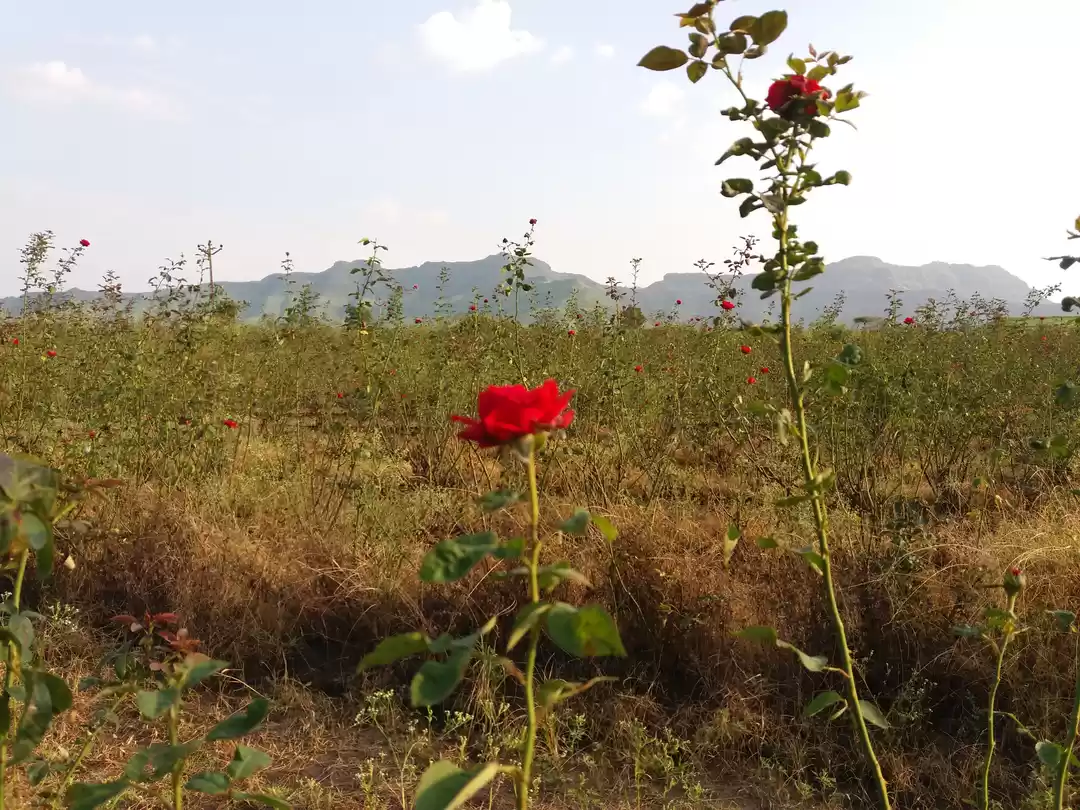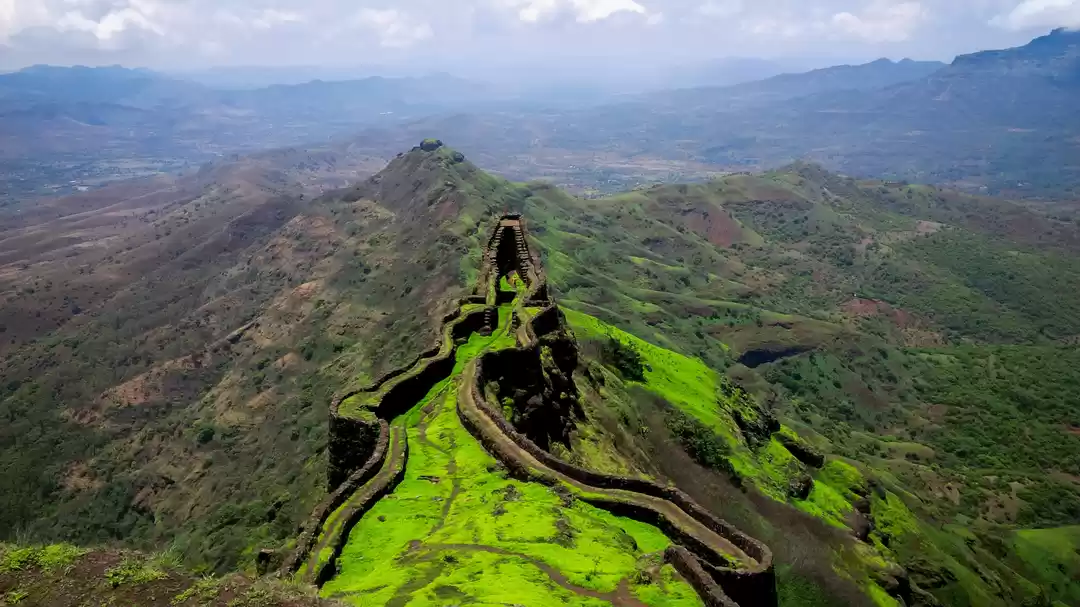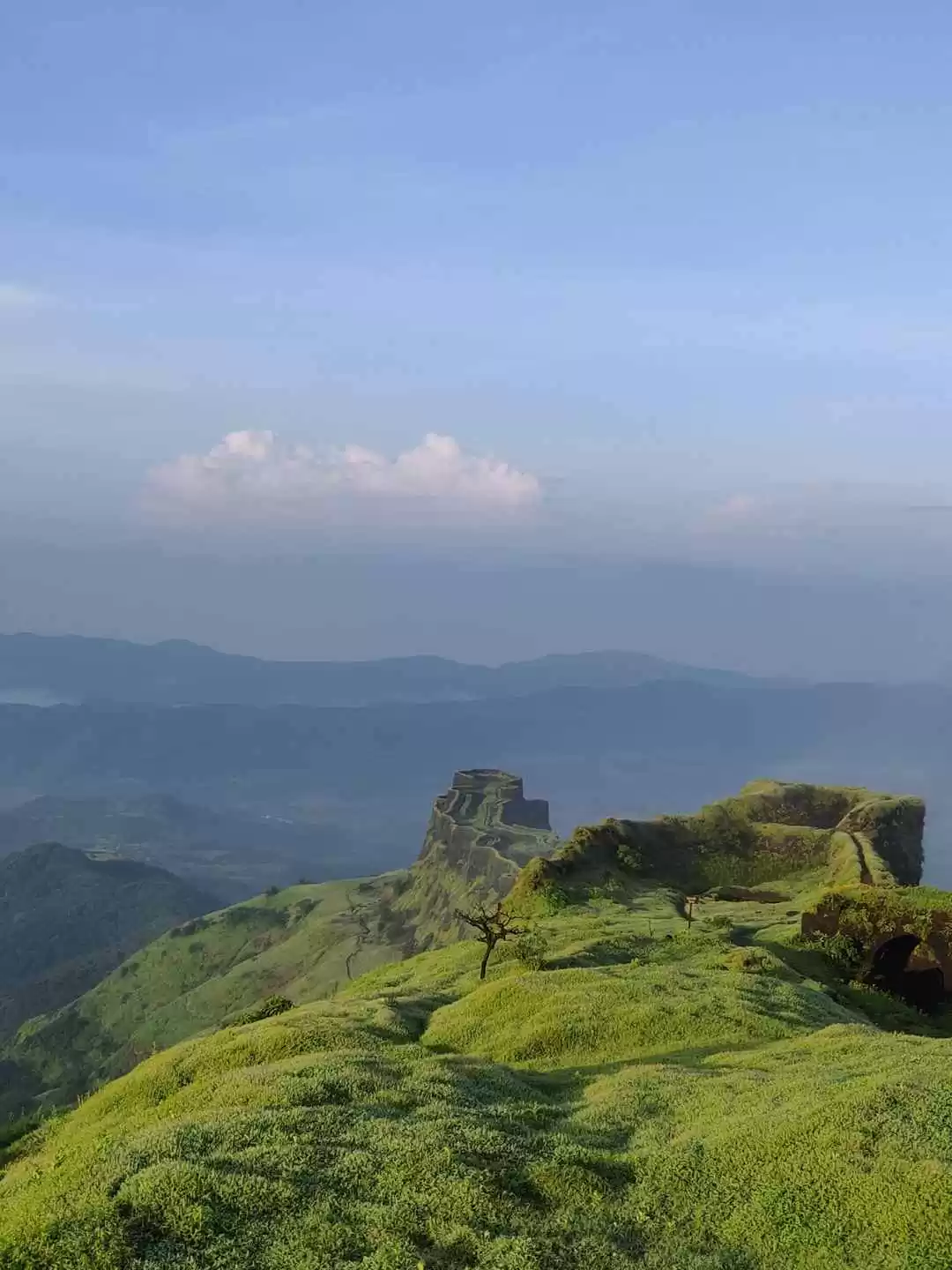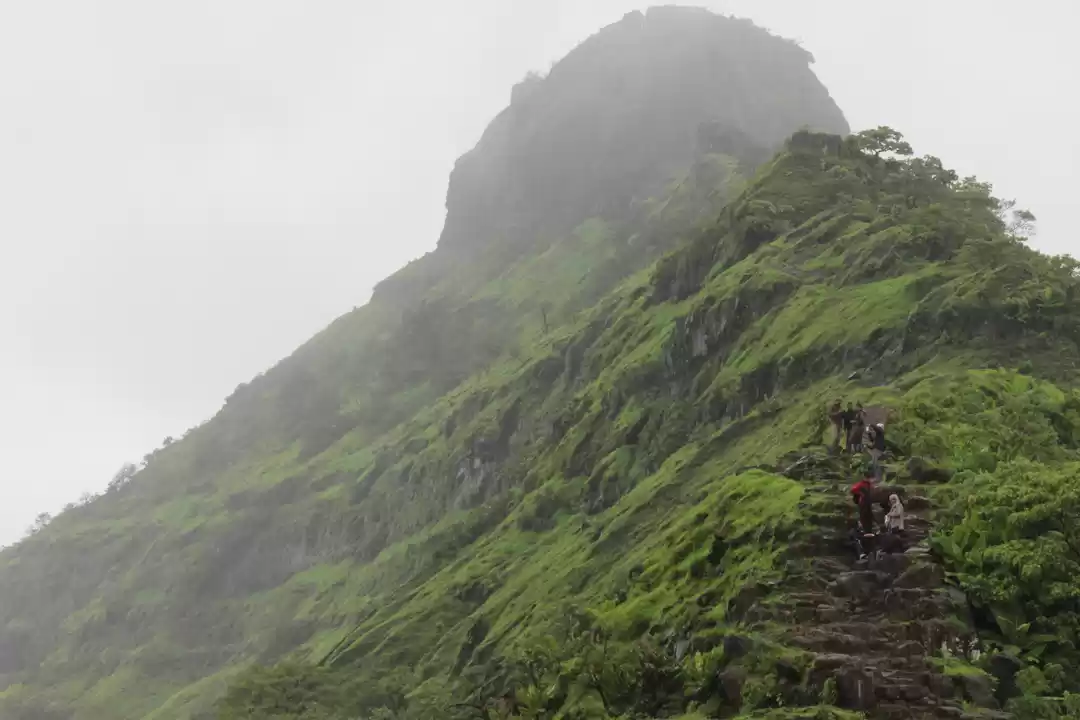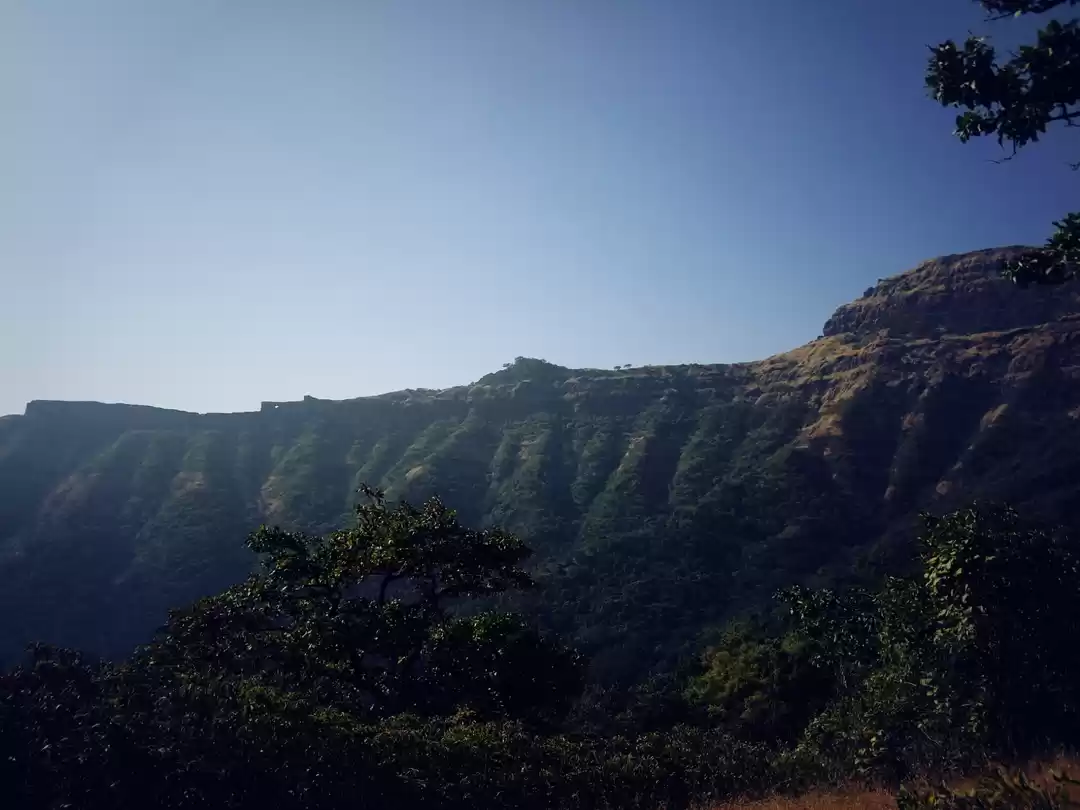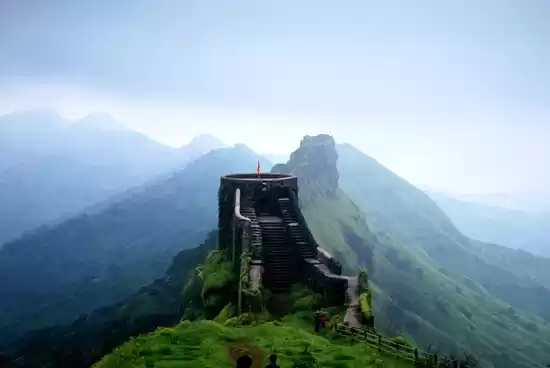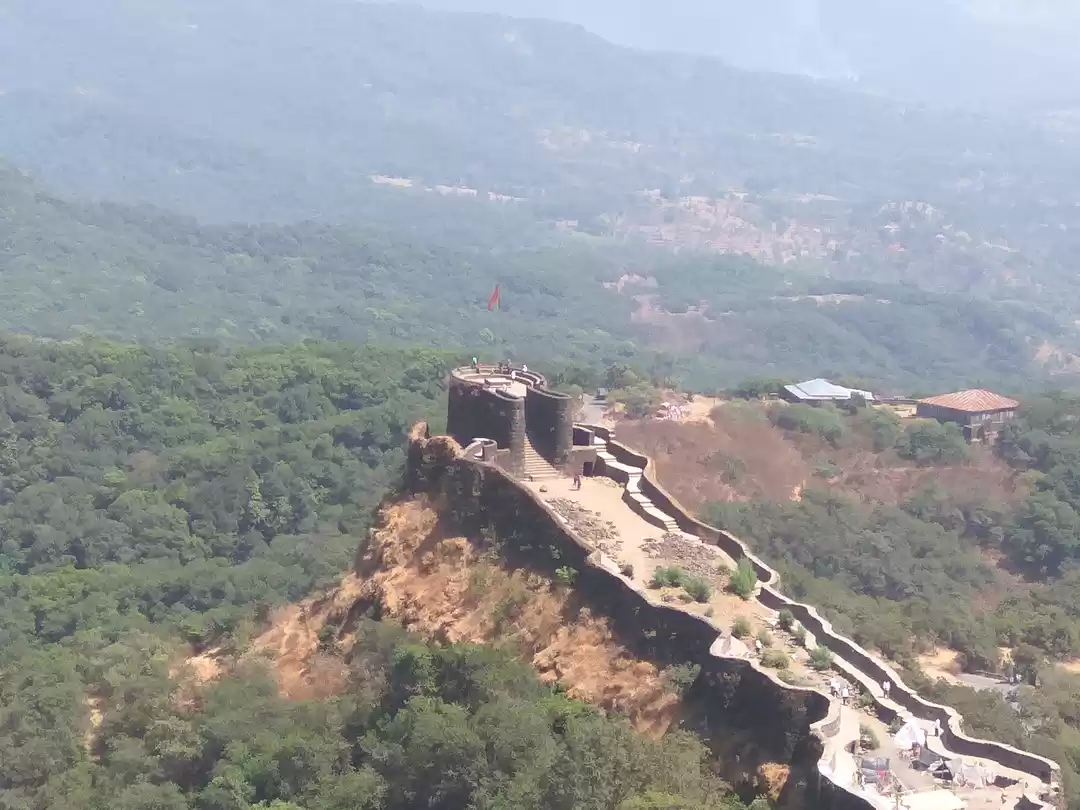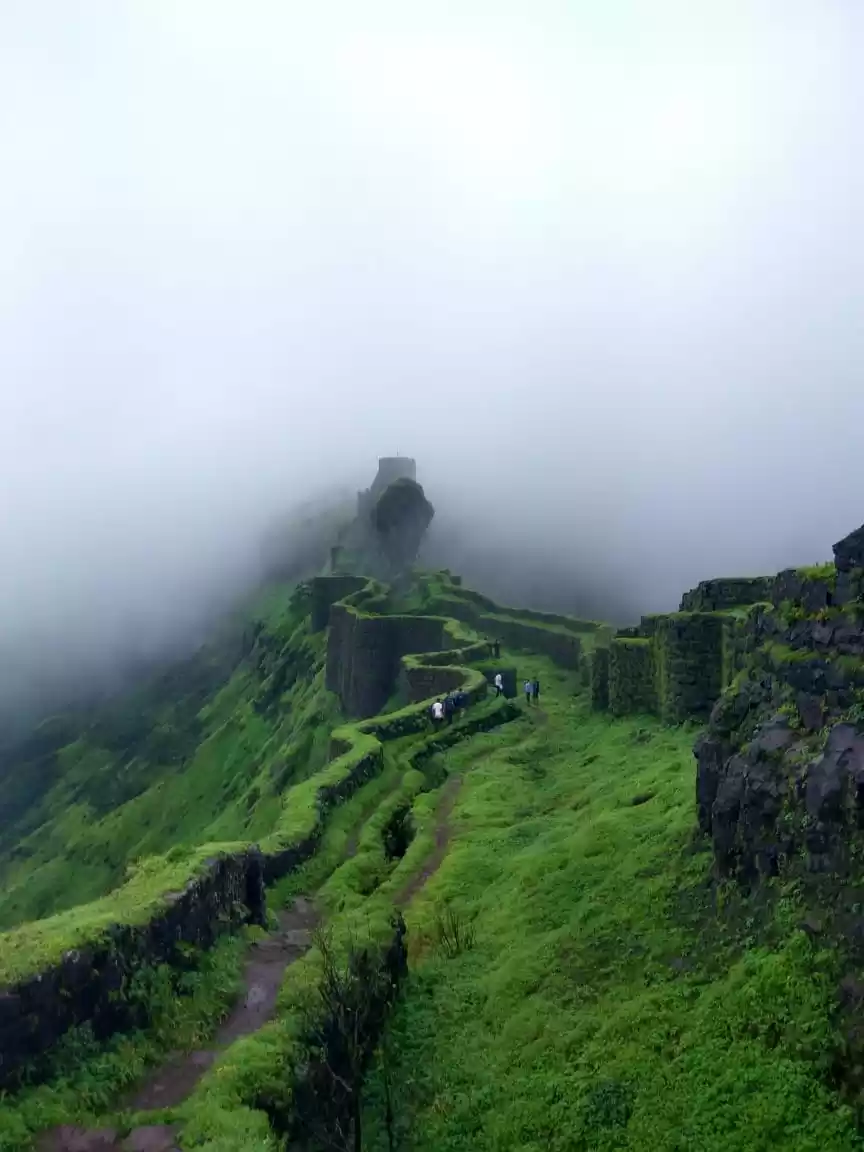
Purandar fort is situated in the mountain range of the Pune district. The height of the fort is 4472 Ft (1387 m). Despite being in Pune district, the fort is far from the hustle and bustle of the city.
Some forks have burst to the east from the original line extending from south to north of the Sahyadri. One of them is a fork. Going towards Sinhagad, the same fork is about 24 km further and after that you get Bhuleshwar.
Purandar and Vajragad are situated in this mountain range. To reach Purandar, one has to cross three ghats namely Katraj, Bapdev, and Dive. The base of the fort can be reached by crossing these three ghats.
A different history is told behind the origin of the name Purandar fort. There is a village called Narayanpur at the foot of Purandar. The original name of the village was 'Pur'. The fort was named 'Purandhar' after this village. It is said that the name 'Purandar' was corrupted over time.
Purandar Fort is very large in size. It is equally strong with expansion. But at present, the fort seems to have fallen to some extent. But in history, this fort was very important for defense. Because there is enough space on the fort.
The fort could fight for a long time with a large stockpile of ammunition and grain. All other sides of the fort are inaccessible except one side. From the fort, one can easily see the surrounding area. The fort is 20 miles southeast of Pune and 6 miles southwest.
Must See - Devkund Waterfall - Pond of Gods!
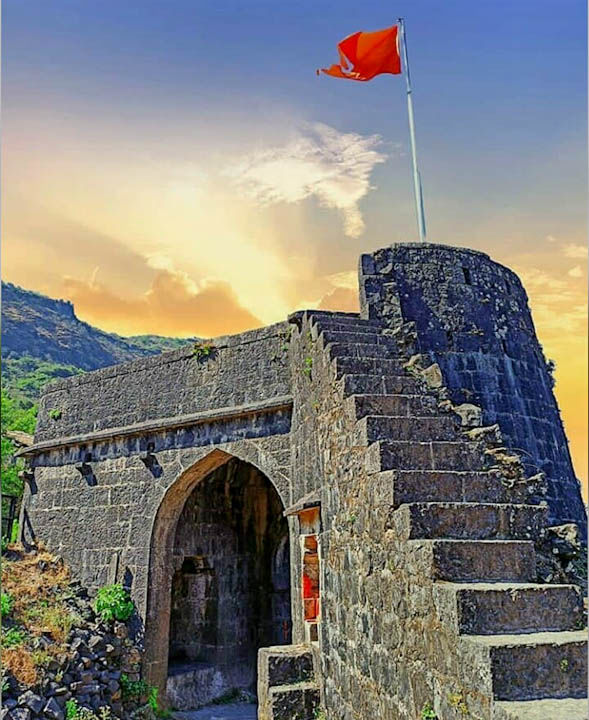
Purandar Fort History-
During the Bahamani period, Chandrasampat Deshpande of Bidar took possession of Purandar on behalf of the Bahamani government. He rebuilt the fort himself and his descendants for the next few generations. In 1489, the fort was conquered by Nizamshahi Sardar Malik Ahmed. Later, in 1550, Adilshahi conquered this fort and it remained in the possession of Adilshahi for a long time.
In 1649, Adilshah captured Shahaji Raja on this fort. At the same time, Shivaji Maharaj was taking possession of many forts of Adilshah. Adilshah also decided to make arrangements for Shivaji Maharaj to save the fort from escaping from his hands and sent him to Fateh Khan for that achievement.
Recommended to You - Kalsubai-The Everest of Maharashtra
On the one hand, the imprisoned father and on the other hand, the self-government threatened by Fateh Khan was in trouble, and to solve this problem, the Shivaji Maharaj chose Purandar Fort for the battle.
At that time Adilshah's loyal Sardar Mahadji Nilkanth was the head of the fort. Taking advantage of the quarrel between his siblings, Shivaji Maharaj entered the fort and won the battle with Fateh Khan.
The fort came under the control of the Marathas. In the year 1655, Netaji Palkar was elected as the head of the fort. And the golden moment on the fort of this period is the birth of Sambhaji Maharaj on 14th May 1657.
But in 1665, Mughal chief Jai Singh laid siege to Purandar Fort. At the same time, Purandar was ruled by Murarbaji Prabhu, the chief of the famous people. He had a thousand men with him, a thousand of the fort, a total of two thousand people.
Seven hundred of them were selected and Murarbaji marched on Dilerkhana. Murarbaji fought valiantly but Murarbaji fell and along with that Purandar passed away. Shivaji Maharaj had to give a total of 23 forts to the Mughals, including Purandar Fort.
On March 8, 1670, Nilopant Mujumdar brought Purandar back under Swarajya. After the death of Sambhaji Maharaj, the fort was conquered by Aurangzeb and named Azamgad. Later, on behalf of the Marathas, Secretary Shankaraji Narayan quarreled with the Mughals and took Purandar. In 1695, Chhatrapati Shahu Maharaj gave the fort to the Peshwas. For many days the fort was the capital of the Peshwas. In 1818, the fort was captured by the British.
What to see? -
Although Purandar and Vajragad are situated on the same hilltop, they are two separate forts.
Bini Darwaja-
This is the only door on Purandar Machi. This gate is used on the way to the fort from Narayanpur village. Upon entering through the door, there are guard porches. Purandar's moat in front attracts our attention. Once inside, there are two lanes, one going straight ahead and the other turning left at the back. As you proceed along the straight road, you will see army barracks and some bungalows on the slope. Going a little further, you will see a temple at the foot of the fort on the right. Temple's name is Purandareshwar
This temple belongs to Mahadev. The temple has an idol of Indra ranging from one and a half to one and a half feet. It should be a Hemadpanthi haircut in general. This temple was renovated by Bajirao.
Rameshwar Temple -
In the back corner of Purandareshwar temple is the Rameshwar temple of the Peshwa dynasty. It was a private temple of the Peshwas. A little further up from this temple are the remains of the Peshwa's two-storied palace. The fort was built by Balaji Vishwanath at the beginning of Peshwa. There is a well behind this castle. Going a little further from here takes two parts. One way goes up towards Balekilla while the other goes down towards Bhairavkhindi. After going up towards Balekilla, a person comes to Delhi Gate within 15 minutes.
This is the north-facing door. At the turn of the door is the temple of Shri Lakshmi Mata. Upon entering, another door appears on the right. The path on the left leads to the other end of the fort. This route takes some water tanks.
As you enter through the Delhi Gate, you will see an edge on the left going straight east. That's the Khandkada. At the end of this ring is a tower. After seeing the tower, come back to the door. A path leads from here. There are a few water tanks around this road. A little further on, there is a hill on the right. This is where the remains of Amber Khana can be seen. If you look up a little, you can see the ruins of the castle. As you walk along the road, you come across some water tanks. Continuing on this path, one path goes down to the left. After passing this path, Kedar Darwaza comes.
After passing the statue of Murarbaji, you come across Padmavati Lake.
Shendarya Buruj-
Behind the Padmavati lake, to the north-west of the fort, along the ramparts, a bastion has been built. Its name is Shendarya Buruj.
Kedareshwar-
After seeing Kedar Darwaza and walking for 15 minutes along the main road, it takes a few steps. They take you directly to the Kedareshwar temple. The original deity of Purandar is Kedareshwar. There is a stone lantern in front of the temple. There is a stone pavement all around. The temple of Kedareshwar is the highest part of the fort. From here you can see Rajgad, Torna, Sinhagad, Rayreshwar, Rohida, Malhargad, Karrahepathar. Behind this Kedar hill, there is a tower called Konkanya tower.
Purandar Machi-
Turn back and come straight ahead through the Delhi Gate so that you reach Bhairavkhindi on Machi. Along the way, many ruins of the castle can be seen.
Bhairavgad-
There is a way to Vajragad through this gorge. There is a statue of Shivaji Maharaj in the gorge. As there is a road leading to this gorge, Rajale Lake is on the right side of the road. The water of this lake is used on Purandarmachi.
Veer Murarbaji Statue-
After entering through the Bini door, when you go to the right, you can see the statue of Murarbaji in front The statue was established in 1970.















